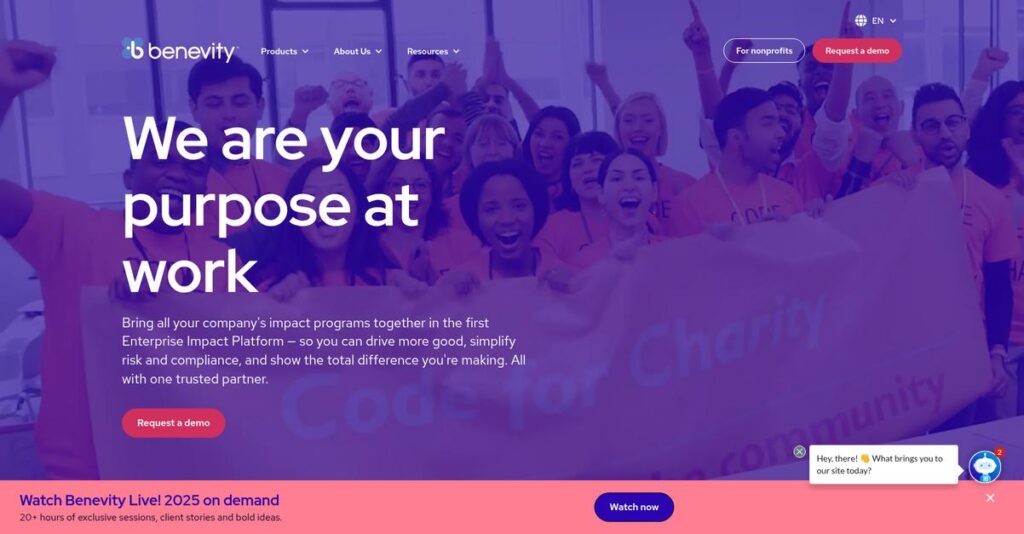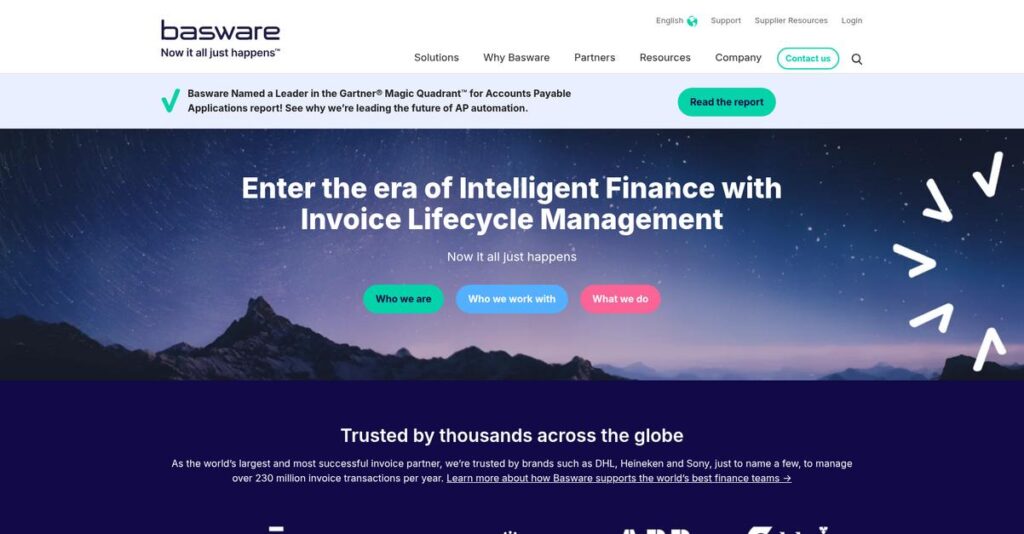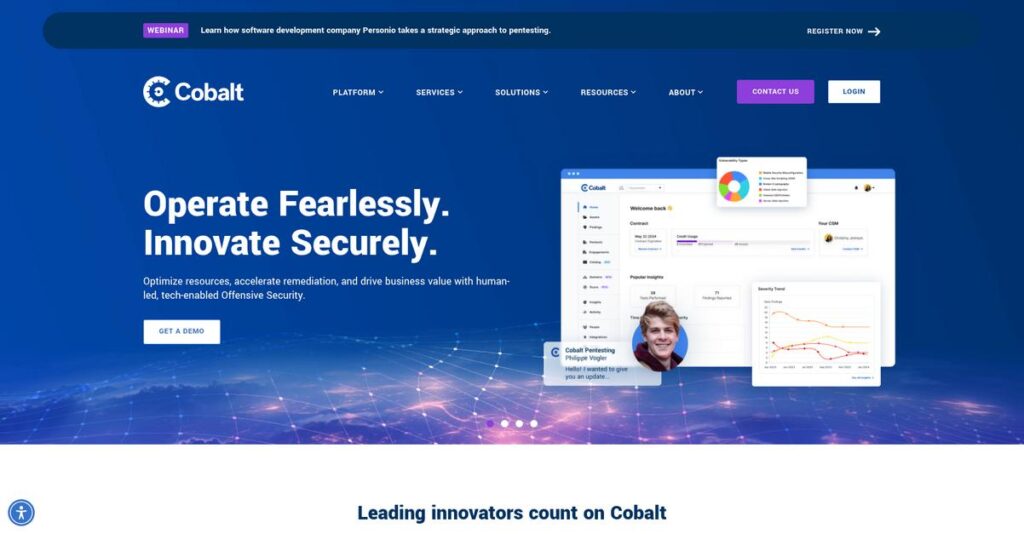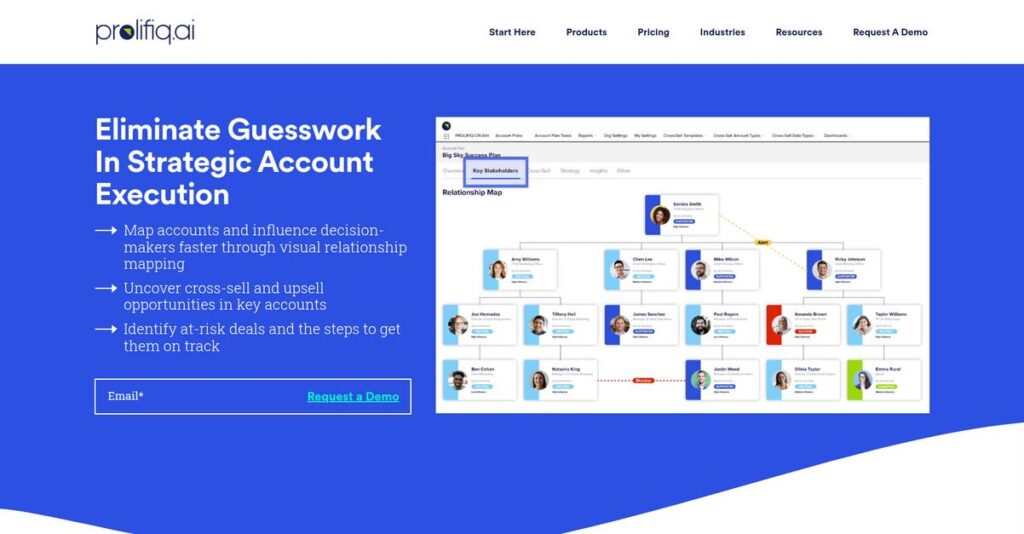Managing global CSR shouldn’t be this complicated.
If you’re trying to engage employees and track impact, the endless mess of scattered giving, volunteering, and reporting tools can make you want to give up entirely.
The real headache? You’re wasting time and missing real impact because everything feels disconnected, hard to measure, and just too manual every single day.
Benevity takes a more unified approach—combining giving, volunteering, grants, and truly actionable reporting in one place. I’ve explored how their purpose-built platform actually simplifies CSR operations, improves employee participation, and lets you finally show meaningful results—no headaches required.
In this review, I’ll break down how you can finally fix CSR chaos and get control, clarity, and measurable results from your programs.
Here’s what you’ll find in this Benevity review: a deep dive into its standout features, user experience, pricing structure, and a direct comparison with real alternatives so you can judge fit for your team.
My goal? You’ll walk away understanding the features you need to drive engagement, prove program value, and confidently choose your next CSR platform.
Let’s get started.
Quick Summary
- Benevity is a corporate purpose platform that helps companies manage employee giving, volunteering, and grant programs globally.
- Best for medium to large enterprises seeking to boost CSR engagement and track social impact across multiple countries.
- You’ll appreciate its comprehensive all-in-one tools that simplify program management and offer strong customer support.
- Benevity offers custom pricing with no free trial and typically charges annual fees plus a cause support fee on donations.
Benevity Overview
Benevity has been around since 2008, based out of Calgary, Canada. Their core mission is to help companies infuse a culture of ‘goodness’ using their corporate purpose software.
They primarily serve mid-market to enterprise-level organizations, including many household-name brands you’d recognize. What sets them apart is how they provide a truly holistic purpose platform, moving well beyond basic donation portals to genuine employee engagement.
Their 2020 investment from Hg Capital, which pushed their valuation past $1 billion, was a massive vote of confidence. Through this Benevity review, you’ll see why that backing matters.
Unlike competitors that feel siloed, Benevity’s main strength is offering a single platform for giving and volunteering. I find this unified approach simplifies program management and reporting for large, global organizations.
- 🎯 Bonus Resource: While we’re discussing program management for large organizations, understanding how permit to work software can avoid risk is equally important.
They work with some of the biggest names you can think of—Nike, Coca-Cola, and Google—powering initiatives for an impressive list that includes nearly a quarter of the Fortune 1000.
Lately, I’ve noticed their strategic focus is on providing standardized impact data via their new Impact Reports. This helps you prove the true social value of your programs to leadership, not just track participation.
Now let’s examine their capabilities.
Benevity Features
Struggling to make corporate giving programs impactful?
Benevity features are designed to amplify your company’s social impact and boost employee engagement. Here are the five main Benevity features that help you build a culture of good.
1. Employee Giving Programs
Is your company’s giving program a headache to manage?
Complex donation processes and manual matching can overwhelm your HR or CSR team. This often leads to low employee participation and frustration.
Benevity’s giving feature streamlines everything with payroll giving and automated corporate matching. What I love is how employees can easily donate and see their impact, while administration is minimal on your end. This feature supports global giving, making it simple for your international workforce to participate.
This means you can easily align employee generosity with your company’s values and see a real boost in program reach.
- 🎯 Bonus Resource: Speaking of enhancing employee experience, my guide on best DJ software could help elevate your event planning.
2. Volunteer Management
Tired of clunky systems for organizing volunteer events?
Manual tracking of volunteer hours and event sign-ups can be a massive time sink. This often discourages participation due to administrative friction.
This feature provides robust tools to organize and track all volunteer activities, making it super easy for employees to find and join opportunities. From my testing, the ability to create user-generated events really encourages organic participation. It simplifies event creation and impact measurement.
So your team gets a seamless way to contribute time, and you get clear data on collective volunteer impact.
3. Grant Management
Is corporate granting a maze of spreadsheets and manual reviews?
Managing grant applications, tracking disbursements, and assessing impact can be incredibly complex. This often leads to errors and inefficient use of funds.
Benevity’s grant management feature provides a centralized hub for all your corporate granting programs. Here’s what I found: it supports everything from proposal submission to impact assessment, streamlining the entire lifecycle. This helps ensure compliance and transparency, making the process much smoother.
This means you can manage your corporate giving effectively, ensuring grants are tracked efficiently and make a measurable difference.
4. Employee Resource Group (ERG) Support & Micro-actions
Having trouble engaging your entire workforce in CSR efforts?
It can be hard to involve diverse teams, especially deskless or distributed employees, in meaningful CSR activities. This limits your program’s overall reach and inclusivity.
This feature provides dedicated support for ERGs and introduces “micro-actions” that make participation accessible to everyone. What I really appreciate is how these small, everyday actions like biking to work contribute to a broader culture of purpose. It fosters a sense of collective impact for all.
So you can easily foster a more inclusive culture of purpose, ensuring every employee feels empowered to contribute, regardless of their role or location.
5. Impact Reporting and Analytics
Can’t demonstrate the true impact of your CSR initiatives?
Measuring the real-world outcomes of your giving and volunteering efforts can be challenging. This makes it hard to justify program spend or show value to stakeholders.
Benevity’s analytics feature provides deep insights into program effectiveness, participation rates, and overall social impact. What you get is standardized, outcomes-based data via Impact Genome that clearly communicates your contributions. This provides a clear picture of your positive influence.
This means you can easily evaluate your programs and clearly communicate their tangible benefits to your organization and the wider community.
Pros & Cons
- ✅ Streamlined employee giving with automated corporate matching.
- ✅ Comprehensive tools for organizing and tracking volunteer activities.
- ✅ Robust analytics provide clear, outcomes-based social impact data.
- ⚠️ Integration limitations with some key HR systems like Workday.
- ⚠️ Nonprofits report delays in donation processing and donor information.
- ⚠️ Search functionality can be clunky, though recent improvements noted.
You’ll appreciate how these Benevity features seamlessly integrate to provide a complete corporate purpose platform that centralizes your CSR efforts.
\n\n
Benevity Pricing
Hidden costs got you frustrated?
Benevity pricing follows a custom quote model, requiring direct contact with sales to get a personalized breakdown of what you’ll pay.
Cost Breakdown
- Base Platform: Reported to start from $1,000+/annually
- User Licenses: Not specified; volume-based pricing likely
- Implementation: Custom quote; varies by complexity
- Integrations: Varies by complexity, additional costs possible
- Key Factors: Company size, program scope, number of employees, desired modules, Cause Support Fee (2.9% on donations)
1. Pricing Model & Cost Factors
Understanding their pricing approach.
Benevity’s pricing operates on a custom, annual subscription model with no public tiers. What I found regarding pricing is that your costs depend heavily on your organization’s size, the scope of your CSR programs, and features like employee giving or grant management. Expect a quote tailored to your specific needs.
From my cost analysis, this means your budget will need a direct conversation to align with your desired program scale.
2. Value Assessment & ROI
Is this an investment worth it?
While Benevity pricing requires a direct quote, the value comes from its comprehensive platform for managing global CSR initiatives and boosting employee engagement. This means strong ROI from streamlined programs and measurable impact reporting, which can justify the investment compared to managing it manually.
The result is your budget gets a powerful tool to amplify social good, potentially reducing administrative overhead.
- 🎯 Bonus Resource: Speaking of financial health, my guide on debt collection software explores how to maximize compliant recovery.
3. Budget Planning & Implementation
Consider all potential expenses.
Beyond the annual platform fee, be aware of the 2.9% “Cause Support Fee” on donations made through the platform. What I found regarding pricing is that these transaction fees can significantly impact your overall spend, especially for large enterprises with high donation volumes.
So for your business, plan to cover these additional fees to ensure maximum impact for your chosen charities.
My Take: Benevity’s custom pricing model caters to mid-market to enterprise-level organizations, offering tailored solutions for complex CSR needs, though potential transaction fees require careful budget planning.
The overall Benevity pricing reflects customized value for robust corporate social responsibility programs.
Benevity Reviews
What do real customers actually think?
To help you understand real-world experiences, I’ve analyzed numerous Benevity reviews, identifying key patterns and sentiments from actual users to provide balanced insights.
1. Overall User Satisfaction
Users seem generally satisfied.
From my review analysis, Benevity consistently achieves positive ratings, with high scores for ease of use. What I found in user feedback is that many users find the platform incredibly intuitive, leading to broad adoption and engagement within their organizations.
This indicates you can expect a smooth experience, especially for employees new to CSR platforms.
2. Common Praise Points
The support and engagement stand out.
- 🎯 Bonus Resource: Speaking of smooth operations and secure data, my article on Best Electronic Signature Software provides crucial insights.
Users frequently praise Benevity’s responsive customer support team and its effectiveness in boosting employee engagement. From the reviews I analyzed, the platform’s challenges feature effectively motivates participation, making CSR initiatives more dynamic and accessible for employees.
This means your team will find it easy to connect with and contribute to social impact efforts.
3. Frequent Complaints
Integration gaps are a concern.
Customers occasionally voice frustration over limited integrations with specific HR systems like Workday, impacting data flow. What stands out in customer feedback is how delays in donation processing and limited donor information frustrate some nonprofit partners who rely on timely data.
These issues are worth noting, but may not be deal-breakers depending on your specific needs.
What Customers Say
- Positive: “Customer support team (Guillaume Granelli) has been taking good care of us.” (G2)
- Constructive: “The only drawback we’ve experienced is the lack of integration with Workday.” (G2)
- Bottom Line: “Spark makes workplace giving and volunteering frictionless.” (G2)
Overall, Benevity reviews reveal high user satisfaction despite some integration and processing issues.
Best Benevity Alternatives
Too many corporate giving options?
The best Benevity alternatives include several strong options, each better suited for different business situations, priorities, and specific CSR program needs you might have.
1. YourCause CSRconnect (by Blackbaud)
Already in the Blackbaud ecosystem?
YourCause CSRconnect offers a more traditional platform for managing donations, volunteering, and grants. What I found comparing options is that YourCause can be a more cost-effective alternative if you prioritize budget and are already integrated with other Blackbaud solutions, despite its older interface.
Choose YourCause when deep Blackbaud integration or a potentially lower price point is your primary concern.
- 🎯 Bonus Resource: Speaking of specialized software, you might find my guide on music notation software helpful for creative endeavors.
2. Millie
Want a simple, budget-friendly giving platform?
Millie emphasizes a highly intuitive user experience, fast implementation, and a commitment to ensuring more of the donation reaches charities. From my competitive analysis, Millie offers a clean, straightforward user interface and doesn’t take a percentage of donations, making it appealing for smaller companies.
Consider this alternative if you prioritize ease of use, quick setup, and maximizing the direct impact of donations.
3. Bonterra (formerly CyberGrants)
Need extensive customization for grant management?
Bonterra (CyberGrants) provides robust tools, especially for grantmakers, and is known for offering more customization options for complex requirements. Alternative-wise, Bonterra excels in highly customized grant management and detailed fund tracking, though Benevity offers a more unified user experience across its modules.
Choose Bonterra if your organization requires deep customization for grant processes or has intricate fund tracking needs.
4. Goodera
Focusing heavily on robust volunteering programs?
Goodera provides innovative technology-based services, particularly strong in organizing diverse volunteering initiatives and detailed impact monitoring. From my analysis, Goodera offers robust volunteering and evaluation capabilities, making it an interesting alternative for companies prioritizing these specific aspects of CSR.
Choose Goodera if your primary focus is on comprehensive volunteering management and in-depth monitoring and evaluation.
Quick Decision Guide
- Choose Benevity: Comprehensive, global all-in-one CSR platform with premium support
- Choose YourCause: Blackbaud ecosystem integration or cost-sensitive legacy needs
- Choose Millie: User-friendly, quick setup for direct, fee-free giving
- Choose Bonterra: Extensive customization for complex grant management needs
- Choose Goodera: Innovative and robust volunteering program management
The best Benevity alternatives depend on your specific business size, budget, and program priorities, not just feature lists.
Benevity Setup
How complex is Benevity implementation really?
Understanding the practicalities of Benevity setup is key for any organization. This Benevity review section breaks down what to expect during deployment, helping you set realistic expectations.
1. Setup Complexity & Timeline
Don’t expect an instant flip of a switch.
Benevity setup is generally rated easy, but some enterprises report significant delays, even months post-signing. From my implementation analysis, your timeline depends heavily on internal readiness and the complexity of your CSR programs, requiring dedicated focus to avoid missed opportunities.
You’ll need to plan for a structured rollout, ensuring internal teams are prepared for the phases of implementation.
2. Technical Requirements & Integration
Be ready for some IT involvement.
Benevity is cloud-based, minimizing on-premise demands, but seamless integration with HR and payroll systems is crucial. What I found about deployment is that lack of integration with specific HR systems like Workday can lead to manual duplication and uncounted volunteer hours, despite its multi-currency support.
Your IT team should assess current system compatibility and prepare for potential data synchronization challenges upfront.
- 🎯 Bonus Resource: While we’re discussing systems and software, understanding the best fire department software is equally important for specialized needs.
3. Training & Change Management
User adoption isn’t automatic.
While Benevity’s interface is intuitive, comprehensive training is available and often beneficial to maximize feature utilization. From my analysis, successful change management ensures broad employee engagement rather than just a few early adopters, leveraging available documentation and live sessions.
You’ll want to promote the platform internally and provide structured training to ensure employees fully embrace the new CSR initiatives.
4. Support & Success Factors
Don’t overlook ongoing vendor support.
Benevity’s support quality is highly praised, with hands-on, consultative assistance from CSR professionals during onboarding. From my analysis, consistent, knowledgeable account management is crucial for a stress-free experience, even though new managers might need time to get up to speed.
Your team should establish clear communication channels with Benevity’s support and utilize their expertise throughout the process.
Implementation Checklist
- Timeline: Weeks to several months, depending on organizational size
- Team Size: Project lead, HR/CSR liaison, and IT support
- Budget: Software cost plus internal resource allocation for setup
- Technical: HR/payroll system integration capabilities
- Success Factor: Dedicated internal champion and clear CSR goals
Overall, Benevity setup generally offers a positive experience, but successful deployment requires proactive planning and internal commitment to fully leverage its capabilities.
Bottom Line
Does Benevity fit your corporate social responsibility needs?
This Benevity review provides a comprehensive analysis to help you understand if this leading corporate purpose platform aligns with your company’s social impact goals and operational requirements.
1. Who This Works Best For
Large enterprises with global CSR aspirations.
Benevity is ideal for medium to large enterprises and global corporations committed to extensive CSR and employee engagement. From my user analysis, companies with a significant global employee base benefit most from its multi-language and multi-currency support, streamlining complex international programs.
You will see strong returns if your organization seeks to centralize and scale sophisticated giving, volunteering, and grant management initiatives.
2. Overall Strengths
Unmatched global reach and engagement capabilities.
The software succeeds in driving significant employee engagement across multi-national operations, offering robust reporting, and supporting CSR initiatives in over 100 countries. From my comprehensive analysis, its ability to unify global CSR efforts provides a strategic advantage for large, distributed organizations seeking measurable social impact.
These strengths will help your business foster a strong culture of purpose and streamline complex social good programs effectively.
3. Key Limitations
Pricing transparency and niche integration challenges.
While powerful, Benevity’s non-public pricing can be a barrier for smaller organizations, and some users note a desire for more seamless integration with specific HR systems. Based on this review, nonprofits also report donation processing delays and limited donor information, which can be a concern for direct impact tracking.
You should view these limitations as important considerations for your budget and specific integration needs, rather than outright deal-breakers.
4. Final Recommendation
Benevity earns a strong recommendation for specific users.
You should choose this software if your large enterprise requires a comprehensive, global platform for CSR, employee engagement, and impact measurement. From my analysis, your success hinges on a significant budget and a strong commitment to scaling a purpose-driven culture across your organization.
My confidence level is high for global corporate social responsibility programs, but lower for smaller businesses with budget constraints.
Bottom Line
- Verdict: Recommended for large enterprises with global CSR needs
- Best For: Medium to large enterprises and global corporations
- Business Size: Organizations with significant employee base and global presence
- Biggest Strength: Global reach, employee engagement, and robust impact reporting
- Main Concern: Non-public pricing and some integration/nonprofit data issues
- Next Step: Contact sales for a demo to assess feature and pricing fit
This Benevity review highlights its strong value for the right enterprise profile, while also pointing out important considerations around cost and specific integration needs for your decision.





